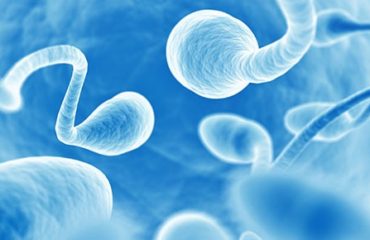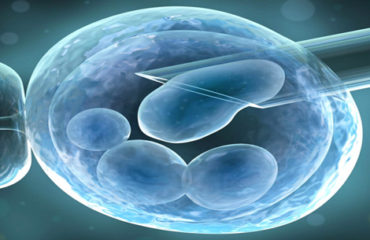Egg Freezing
We now confidently offers egg freezing with successful pregnancy outcomes following the freeze / thaw process.
A woman’s fertility is predominantly dependant on the quality and quantity of her eggs. A healthy woman has a finite number of eggs, which is at its maximum (6-7 million) before birth and continues to decline throughout life. As egg numbers (and quality) decline, chances of both natural conception and success through fertility treatment decrease significantly over 35 and this process accelerates over 40.
Over the last 30 years the average age of women in their first pregnancy in the UK has consistently increased and as of 2013 is over 30 for the first time and over 20% of babies are now born to mothers over 35.
“Social” egg freezing allows women the option of freezing their eggs when younger. This may offer her a better chance of a successful pregnancy in the future than using her older “fresh” eggs, which may be lower in both quality and quantity.
The introduction of “vitrification”, a new rapid cryopreservation technique that minimises crystal formation and therefore limits damage during the freeze/thaw process has made egg freezing as a means to potentially preserve a woman’s long-term fertility a viable option.
Although, many thousands of eggs have safely been stored in the UK since 2001, according to the most recent data from the HFEA, fewer than 60 babies have been born to patients storing and thawing their own eggs. Initially, older less effective freezing techniques were utilised and many of the women who have undertaken egg freezing for social reasons have yet to use their eggs or didn’t need to as they conceived naturally later in life.
What is the success rate of frozen thawed eggs?
Increasing worldwide data is suggesting that frozen eggs may be as effective in achieving pregnancy as fresh eggs and long term data on pregnancy risks such as preterm labour or birth defects shows no increase.
Since adoption of the vitrification technique in 2009 we have performed over 450 cycles of social egg freezing at the Clinic with 26 thaw cycles using vitrified eggs. The table below outlines our success and the most recent national data.
| Vitrification Data | Most recent HFEA Data | |
| Egg Survival Rate | >70% | 62.3% |
| Pregnancy Rate / Thaw cycle | 30.8% | – |
| Ongoing Pregnancy Rate / Thaw cycle | 26.9% | 13.9% |
| Pregnancy Rate / Embryo Transfer | 44.4% | 22.2% |
| Ongoing Pregnancy Rate / Embryo Transfer | 38.9% | – |
These outcomes are likely to increase as women are now likely to freeze more eggs than previously, improving their chances if success.
How many eggs should I aim to freeze?
To maximise egg freezing as an “insurance” policy, a number of stimulation cycles may be required. Using fresh IVF eggs, approximately 15 eggs are collected in women younger than 35 years of age for every baby born, 20 eggs in women 35-40 years of age and many more required in those over 40 years of age. We would therefore recommend women to freeze at as young an age as possible and aim for at least 20 eggs in storage. We therefore offer egg freezing packages for those considering more than one stimulation cycle
What is the ideal age to freeze your eggs?
The main benefit of freezing your eggs is that it “locks in” the quality of a woman’s eggs at the age they were frozen. These eggs can be used at a later stage when the quality of her own remaining eggs may be significantly reduced in comparison. So, the easy answer would be as early as possible but it is not as simple as that.
Despite the decline in both egg quality and quantity with age, there are pitfalls and risks to both freezing too early as well as too late and it is therefore a difficult balance between any social benefit and the physical, emotional and financial burden of treatment.
In theory the earlier a women freezes her eggs, the higher the quality and therefore potential future success with them. However, the earlier you freeze them, the less likely you will ever need to thaw and use them in the future as the chances of a natural pregnancy will be higher.
In contrast, waiting to your late 30s or early 40s would allow you more time to start a family naturally. Social trends have shown us that many women may not be ready to start a family at this age or may not have a relationship that they desire at this point and if this is the case, the expected success rate of eggs frozen at this point will be much lower.
Similarly from a social perspective, freezing your eggs may allow you the peace of mind of a potential “fertility insurance policy” for the future if ever needed but there is never any guarantee of success. Even with such an insurance policy, freezing should never be seen as a definitive alternative to natural conception and a feeling of false reassurance may be in fact detrimental to overall chances of conception.
So in summary, the longer you wait the better the chance of being in a long-term relationship that leads to pregnancy without egg freezing but at the same time, over time the declining egg quantity and quality will result in a lower chance of having a successful pregnancy.
So we would recommend consideration of egg freezing:
- If embarking on any treatment (such as radiotherapy or chemotherapy) that may impact on ovarian reserve and future fertility
- Ideally in your early to mid 30s if single and not planning to imminently start a family
- In those over 35, depending on social circumstance and your egg reserve but the numbers of eggs needed to give potential success will be higher and the overall chance of future success lower.
How long before having children should I consider freezing my eggs?
Once the eggs are stored, the success rate is “locked-in” at the age they were frozen. The duration they spend cryopreserved has no bearing on the future outcome of treatment.
So, you could freeze them 2 or 10 years before you want to have children with similar outcomes. They key, as we have discussed above, is deciding at what age to freeze them.
Does undertaking egg freezing treatment increase the difficulty of conceiving naturally later on in life?
No, but this is a common misconception. In any given cycle, a number of follicles with eggs in them will be recruited from your stores ready to respond to your hormones and grow. In a natural cycle, in response to your natural “follicle stimulating hormone” (FSH) they will all begin to grow, before one becomes the dominant follicle that continues to grow from which you ovulate and release the egg within. The rest will in essence wither and die away before a new batch comes through ready for next month if not pregnant.
When we stimulate your ovaries with FSH injections for IVF or egg freezing all we are doing is making this more process more efficient by stimulating more of those that have already been recruited. As more follicles grow, this allows us to collect as many eggs as possible. We do not recruit any more than are already there so should have no long-term effect on your fertility or bring menopause on earlier.
Once frozen, how long can eggs be kept for?
The law permits you to store your eggs for any period up to 10 years, so routinely you will get an annual letter confirming that you want to continue to keep them stored.
In cases where you or your partner are prematurely infertile or likely to become prematurely infertile, you may store for longer up to 55 years if a medical practitioner certifies this to be true.
How does the egg freezing process work:
The initial steps (1-4) are similar to that in an IVF cycle
Step 1: Ovulation Induction
FSH injections to stimulate the ovaries to produce multiple follicles (each follicle potentially containing an egg), over a period of approximately 2 weeks.
Step 2: Monitoring response
3-4 scans (with blood tests) over this period to monitor the number and size of the follicles to help us correctly time when we should collect them.
Step 3: Preparing for collection
Trigger injection when the leading follicle reaches 17-22mm to mature the eggs in preparation for collection.
Step 4: Egg collection
The eggs are collected using a minor vaginal procedure performed under anaesthetic and under ultrasound guidance.
Step 5: Egg freezing
Following collection the cells around the eggs are stripped away to identify which eggs are mature. These mature eggs are then cryopreserved using the vitrifcation process.
Step 6: Future use
When needed these eggs can be thawed and fertilised using micromanipulation techniques (ICSI) that are required as the freeze / thaw process leaves the outer layer of the egg (zona pellucida) hardened.
Embryo freezing
Embryos can be frozen as part of a standard IVF cycle where any excess embryos of good quality not transferred are frozen or they can be frozen as a stand-alone process for later use for fertility preservation purposes.
Treatments using frozen embryos at the Clinic have now produced over 1300 babies.
Any embryos frozen can be thawed and transferred in a future cycle that is a much simpler process. Often this involves only monitoring of a natural cycle for ovulation at which point embryo thaw and transfer can be appropriately timed (without the need for significant drug treatment or the invasive collection procedure.) If the woman’s cycle is irregular we may recommend hormone replacement therapy (HRT), which will allow us to prepare the lining of the uterus for frozen embryo transfer.
Patients are also responsible for keeping in touch with The Clinic and notifying us of any change of address. The storage period is governed by law and we do not need your consent to remove these embryos from storage at the completion of the statutory period.
Embryo freezing post IVF embryo transfer
Following embryo transfer on Day 5-6, any extra blastocysts of top quality can be cryopreserved and stored for up to 10 years for future use. Due to our careful selection of only what we deem suitable for freezing, these embryos have >90% thaw survival rate.
Embryo freezing as fertility preservation
As there is a longer history of success with embryo freezing than egg freezing, women within a relationship may opt to undergo ovarian stimulation as for a standard IVF cycle, fertilise eggs with partner sperm and store these embryos for later use. This may offer her a better chance of a successful pregnancy in the future than using her older “fresh” eggs, which may be lower in both quality and quantity. In this scenario, where we are not aiming to select and transfer the best embryo they are frozen at the “2PN- stage”, i.e. the day after egg collection.
How successful is embryo freezing?
Although historically frozen embryos are suggested to have lower success rates, the difference with fresh is now questioned. Recent studies suggest that if you directly compare top quality fresh and frozen, the frozen embryos may in fact yield a better pregnancy outcome, along with a lower chance of obstetric complications such as preterm labour and fetal growth restriction.
Oncofertility
1 in 10 of all cancer cases occur in adults of reproductive age. With rapid advances in treatment options for young adults and women of reproductive age with cancer, the long term survival for many previously poor prognosis diseases is much improved .
However, some surgeries and many forms of chemotherapy or radiation therapy that have proven so effective in improving survival rates may severely compromise ovarian, testicular or uterine function. Their damaging effect on developing eggs within the ovary may lead to a dramatic loss in ovarian function, amenorrhoea (loss of cyclical pattern) that may be irreversible and possibly early menopause. Women of reproductive age that receive such a diagnosis may therefore be facing potential loss of future fertility or diminishment in the chances of future childbearing.
These treatments do not have to end the hopes of having a family. Today, in some but not all cases, women with cancer may have the option to preserve their fertility by freezing their eggs or embryos before undergoing cancer treatment and men will have the opportunity to freeze sperm.
 Ελληνικα
Ελληνικα  English
English 




